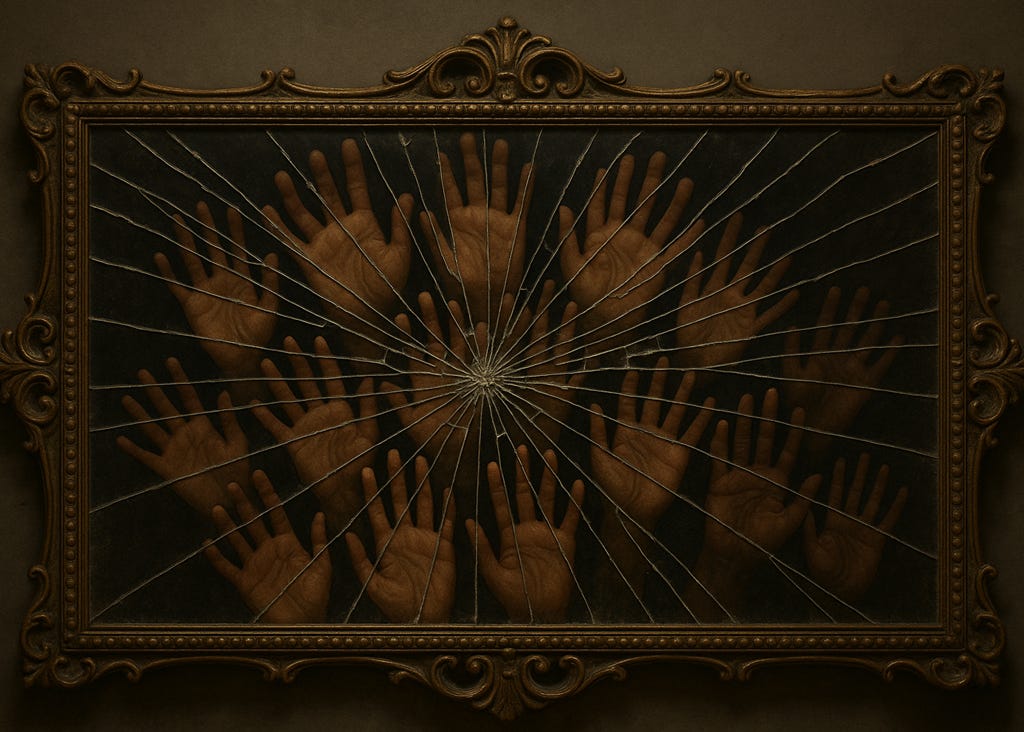Subconscious Sovereignty
Dissociative Identity Disorder carries a lot of stigma in mainstream society, with many questioning its validity. It has been overly dramatised in popular culture, especially in film. When we look at the concept of the subconscious, it is clear that many have a very limited understanding, often due to restricted exposure or access to what it is capable of.
The subconscious is perhaps one of the most powerful innate tools one can possess. Intuitive thinkers who entrust their subconscious with the task of solving specific problems during sleep comprehend the extent of its creative power. The degree to which this capacity can be unlocked varies between individuals, it is layered, and there are multiple routes in. The subconscious can be accessed through flow states, deep meditation, trance-inducing movement, and at times, certain psychedelics. Through these avenues, many discover the vast capabilities of internal knowing.
Most of us carry suppressed internal wounds, these wounds can cause subconscious fragmentation of consciousness, and similar to Dissociative Identity Disorder, can create fragmented psyche-personas, each with its own consciousness.
Those who have reached what feels like a deep ocean within through psychedelics often remain lucid and conscious while inhabiting this expanse, yet there is also an awareness that their primary consciousness is not alone, but present alongside other fragmented persona-consciousnesses. Peculiarly, those who are more open-minded and grounded report experiencing what feels like a surreal yet natural conversation. The primary consciousness engages with one or more persona-consciousnesses, not merely in words like an internal monologue, but also through a deeper form of knowing. The primary consciousness is perceived as the "true" self, yet there is also an awareness that each persona-consciousness is part of that same wider self.
Some experience persona-consciousnesses referring to themselves both as a separate "I" and as a united "we", depending on the issue at hand. When personas speak as "I", it is two or more parts of the psyche conversing, when they speak as "we", it signals an acknowledgement of the shared overall expanse, it can be used interchangeably during one conversation as both "I" and "we". Certain psyche-personas may also overlap, emerging from the same root wound.
Some individuals become consciously aware of the total number of psyche-personas, and at times these are given self-assigned names, an intriguing phenomenon. These fragmented personas are typically aspects of the self that have been neglected or suppressed, and thus not absorbed by the primary consciousness. The inner drive of these facets of the psyche is so strong that, even after fragmentation, they persisted as standalone consciousnesses. In a poetic sense, they reveal the facets of the self that hold immense meaning. Yet subconscious fragmentation is also held in the body, creating somatic imprints that later emerge as ailments, while simultaneously becoming blind spots of the mind.
For those who venture further, integration becomes possible. Multiple persona-consciousnesses can be absorbed in a single altered-state experience. This is rooted in radical honesty, allowing the diminished parts of the self to expand and breathe with dignity. Often the primary consciousness listens as a key persona-consciousness takes centre stage, voicing uncomfortable truths with their autonomous niche personality, and at times, cadence. Usually, when compared to the primary consciousness, perspectives, feelings, and motivations are comparatively much less layered. A common experience is that of child-versions of the psyche, abandoned through wounding, who express baseline emotions of shame, fear, and pain. Another frequent figure is the anger-persona, which surfaces due to the suppression mainstream society imposes. When unleashed, it rips into truths with full wrath, often relating to injustice, moments where the self was not adequately protected in favour of compliance or harmony, or suppressed intense perverse carnal desires.
The voiceless parts of us that are suppressed continue to live in the subconscious as psychic tension. For most, suppression has become so habitual and familiar that they are no longer consciously aware of doing so. Unfortunately, the body often carries the cost later in life.
Active integration occurs when the primary consciousness absorbs or accepts the relevant persona-consciousness. There is a desire for the persona-consciousness to return willingly, without resistance - once heard, felt, and accepted. The described sensation is that of two "I"s melting together, superimposed and then gradually merging into an absorbed "we", as if they were never separate. The result is not fear, but a greater sense of wholeness.
Facets of the self that are already integrated remain present too, with the conscious acknowledgement that they have been absorbed into the primary consciousness.
With this in mind, healing is truth-oriented. It means allowing, receiving, and opening to uncomfortable but necessary truths from the parts of the self that feel terrifying or difficult. It requires enabling that which was once silenced to flow through and be heard, until no fragmented personas remain. This demonstrates the power and potential of psychedelic-induced altered-state healing in achieving subconscious sovereignty.


Are you recommending a psychedelic approach to therapy?
Also, the process you described of integrating the fragmented parts of the psyche, in Jungian terms, is the process of individuation.
Jung is quoted as saying that the greatest privilege of a life is to know who one truly is. That obviously cannot occur if you have not identified and integrated your shadow self by pulling it up from the unconscious and dealing with it.